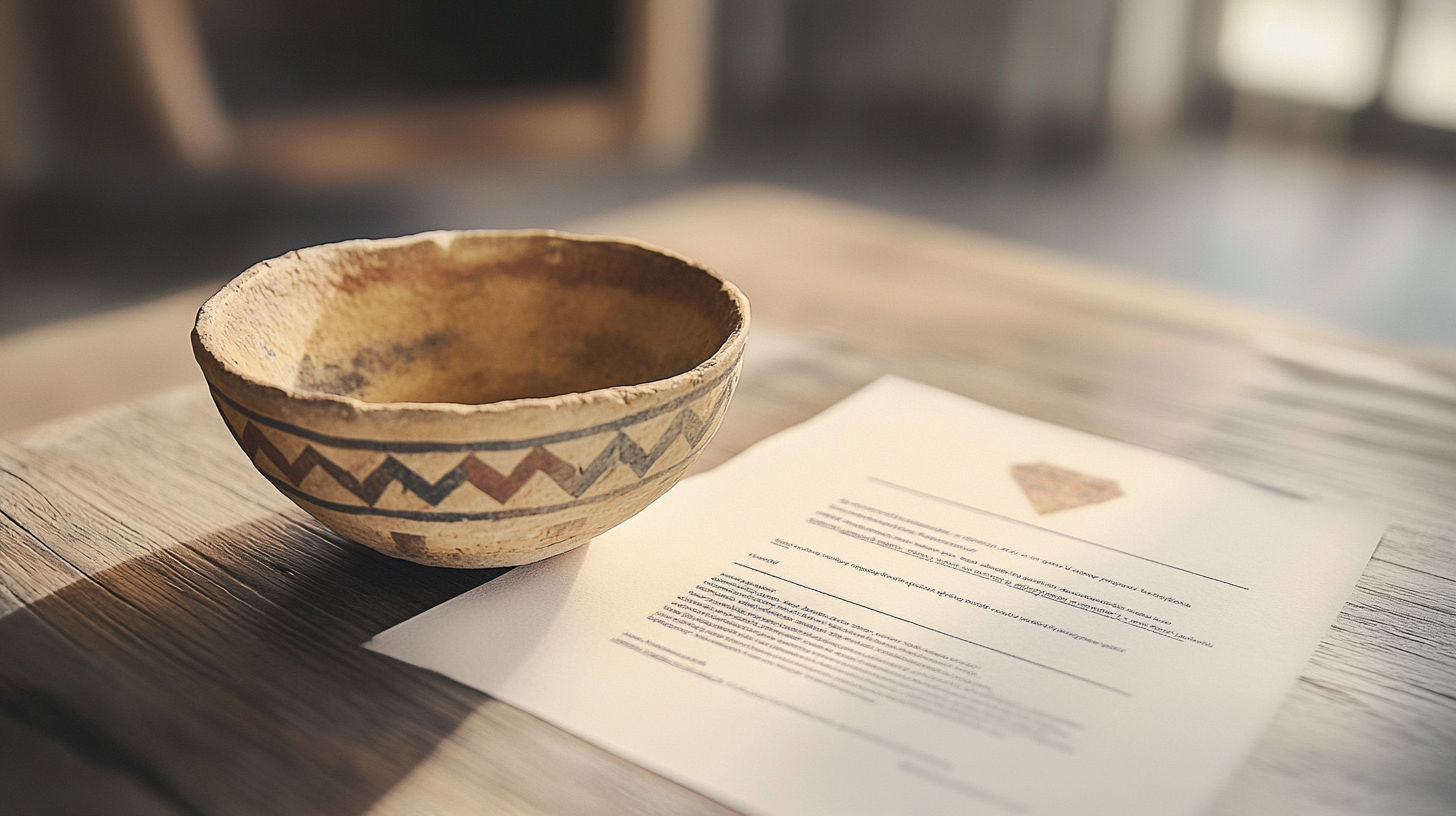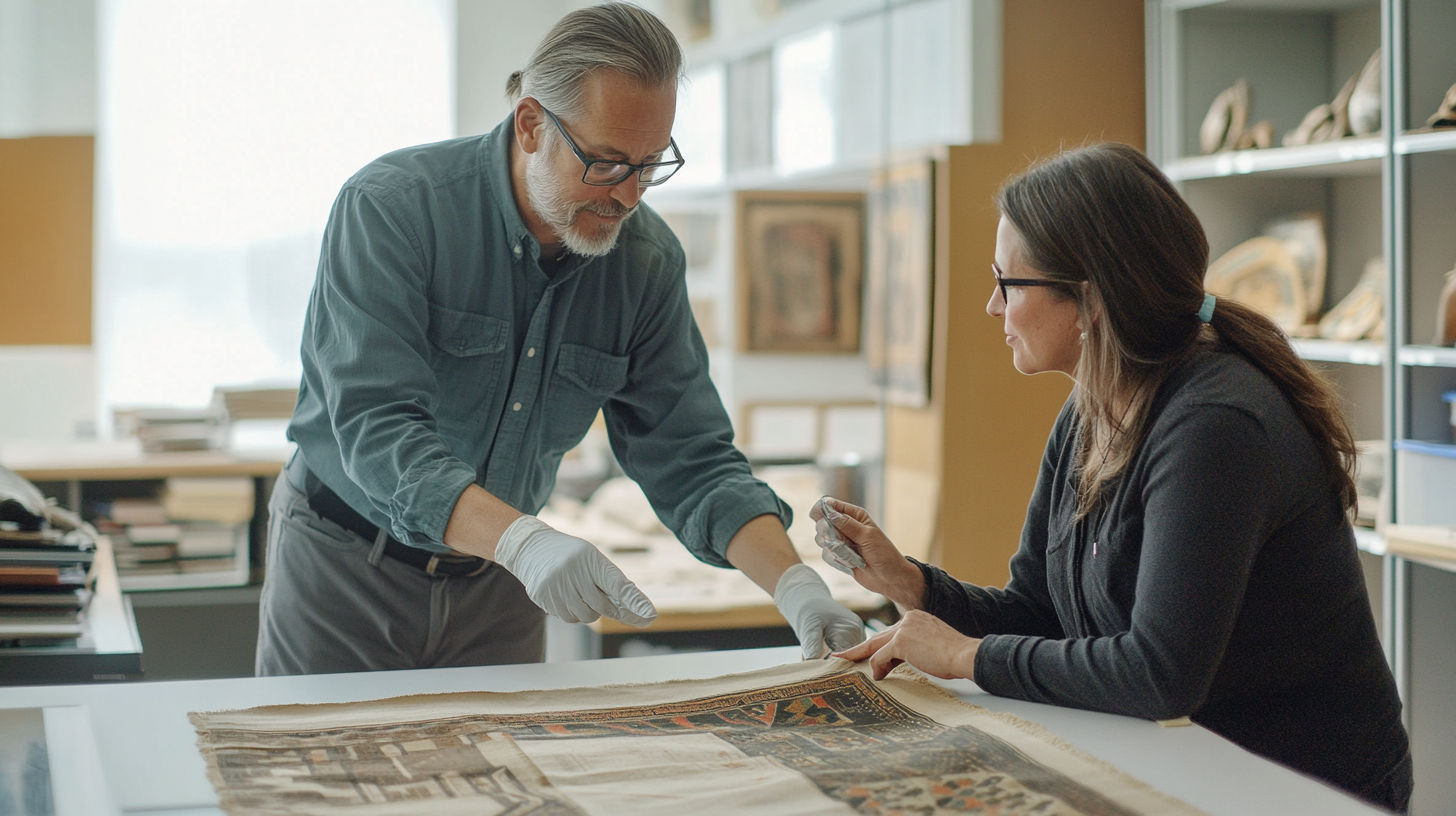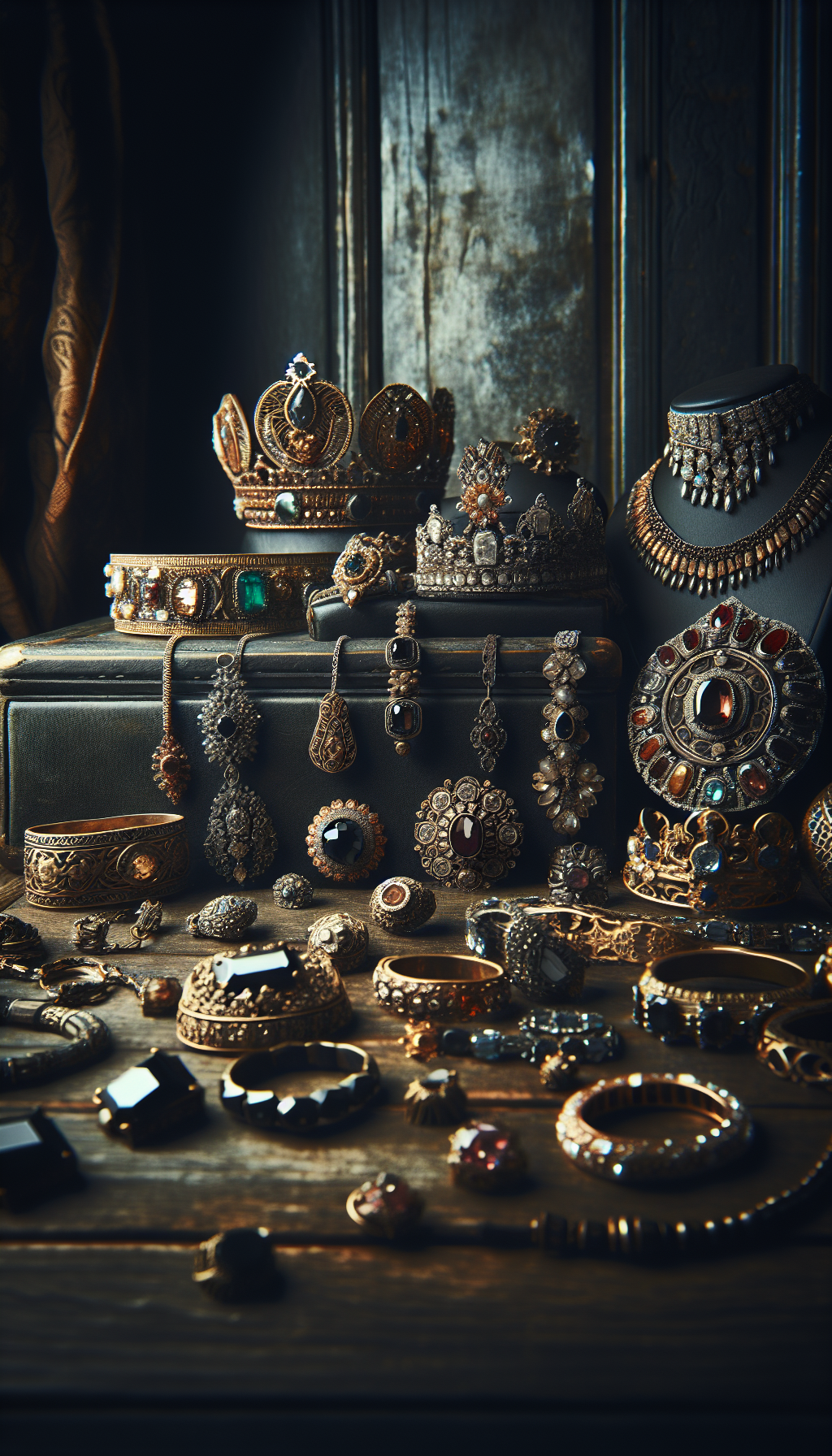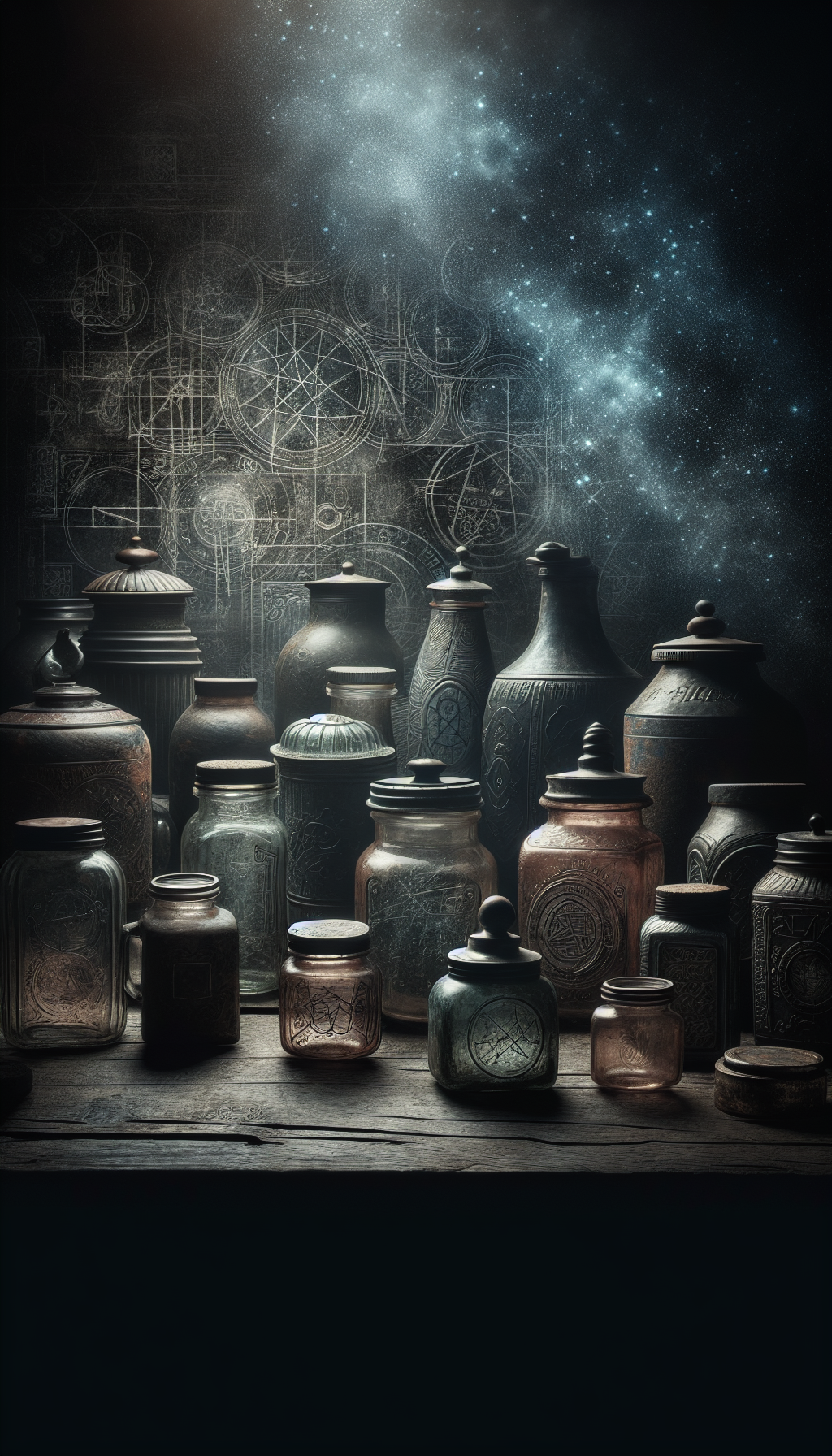Native American artifacts represent not only valuable historical treasures but also important cultural heritage that connects us to North America’s indigenous past. Whether you’ve discovered artifacts on your property, inherited a collection, or are an enthusiastic collector, understanding the true value of these pieces requires specialized knowledge and professional assessment.
This comprehensive guide explores the world of Native American artifact appraisal, providing you with expert insights into authentication, valuation factors, finding qualified appraisers, and legal considerations to keep in mind when dealing with these culturally significant items.
Table of Contents
- Understanding Native American Artifacts
- The Importance of Professional Appraisal
- Authentication Process
- Factors That Affect Valuation
- Finding a Qualified Appraiser
- Appraisal Services and Costs
- Legal Considerations
- Market Trends
- FAQ: Common Questions About Artifact Appraisal
Understanding Native American Artifacts
Native American artifacts encompass a wide range of items created by indigenous peoples across different regions and time periods. These can include:
- Stone tools and weapons: Arrowheads, spear points, axes, bannerstones
- Pottery and ceramics: Vessels, figurines, ritual objects
- Basketry and textiles: Baskets, rugs, blankets, clothing
- Beadwork: Decorated garments, jewelry, ceremonial items
- Jewelry: Necklaces, bracelets, earrings made from various materials
- Ceremonial items: Masks, pipes, medicine bags, prayer sticks
- Art and carvings: Paintings, sculptures, totems, kachina dolls
Historical Timeline of Major Native American Art Periods
- 10,000 BCE - 1500 CE
Pre-Contact Period
Artifacts from this era are the most ancient and often the most valuable, including stone tools, pottery, and early artistic expressions untouched by European influence. - 1500 - 1880
Early Contact and Reservation Period
This period saw the incorporation of European materials and influences, creating unique hybrid art forms. Trade beads, metal tools, and new techniques began appearing in Native works. - 1880 - 1940
Early Market Period
As tourism grew, Native Americans created more items specifically for sale. This era produced many collectible pieces, though some were made for the commercial market rather than tribal use. - 1940 - Present
Contemporary Native American Art
Modern Native American artists combine traditional techniques with contemporary expressions. These pieces are valued both as fine art and as continuations of cultural traditions.
Understanding these historical contexts helps both appraisers and collectors recognize the cultural significance and authenticity of artifacts, which directly impacts their monetary value.
The Importance of Professional Appraisal
There are several compelling reasons to seek a professional appraisal for Native American artifacts:
Insurance Coverage: Documenting the value of artifacts ensures proper insurance coverage in case of theft, damage, or loss.
Estate Planning: Accurate appraisals help with equitable distribution of assets among heirs and provide documentation for estate tax purposes.
Sales Transactions: Whether buying or selling, knowing the fair market value helps ensure both parties make informed decisions.
Donation Valuation: For tax deduction purposes when donating artifacts to museums or educational institutions.
Authentication: Professional appraisers can help determine if an artifact is authentic or a reproduction.
Collection Management: Understanding the value of each piece helps collectors prioritize conservation efforts and make informed acquisition decisions.
Native American Artifact Market Statistics
| Statistic | Value | Context |
|---|---|---|
| Annual Market Size | $200M+ | Estimated annual value of Native American art and artifact market |
| Authentication Impact | 70-90% | Value difference between authenticated and unauthenticated pieces |
| Insurance Claims | 15% | Percentage of private collections making insurance claims annually |
Authentication Process
The authentication process for Native American artifacts typically involves several specialized techniques:
Material Analysis
Experts examine the materials used to create the artifact, looking for:
- Age-appropriate materials consistent with the purported time period
- Natural patina and wear patterns that develop over time
- Traditional crafting techniques specific to the tribal region
Provenance Investigation
Documentation of an artifact’s history of ownership (provenance) can significantly impact its authenticity assessment and value:
- Original purchase receipts
- Previous appraisal records
- Collection history
- Photographic evidence
- Letters or documentation from recognized experts
Stylistic Evaluation
Skilled appraisers analyze design elements that are characteristic of specific tribes and time periods:
- Decoration patterns and motifs
- Construction techniques
- Regional stylistic markers
- Traditional color schemes
Authentication Checklist
Key indicators professional appraisers examine when authenticating Native American artifacts
- Age-appropriate materials and construction techniques
- Natural patina and wear consistent with purported age
- Stylistic elements matching the attributed tribe and period
- Documented provenance or collection history
- Appropriate weight and physical properties
- Traditional crafting methods visible upon close examination
- Absence of modern materials, tools marks, or manufacturing processes
- Consistency with known authenticated examples
Scientific Testing
For high-value or questionable pieces, scientific testing methods might be employed:
- Carbon-14 dating: For organic materials to determine age
- Thermoluminescence testing: For pottery and ceramics
- X-ray fluorescence (XRF): To analyze material composition
- Microscopic analysis: To examine tool marks and crafting techniques
According to the Indian Artifact Grading Authority, proper authentication is the foundation of accurate appraisal and significantly impacts an artifact’s market value.
Factors That Affect Valuation

Professional appraisers consider numerous factors when determining the value of Native American artifacts:
Rarity and Scarcity
- Time period: Pre-contact and early contact period pieces are typically more valuable due to their scarcity
- Tribal origin: Artifacts from smaller or extinct tribes may command higher prices
- Unique characteristics: Unusual size, form, or decorative elements can increase value
Condition
- Completeness: Intact artifacts without damage or missing components
- Original surface: Preservation of original paint, patina, or surface treatment
- Structural integrity: Absence of cracks, breaks, or repairs
- Conservation history: Professional versus amateur restoration efforts
Cultural and Historical Significance
- Ceremonial importance: Items used in important rituals or ceremonies
- Historical context: Connection to significant historical events or figures
- Artistic merit: Exceptional craftsmanship or aesthetic quality
- Representational value: How well the piece represents a specific cultural tradition
Provenance and Documentation
- Collection history: Previous ownership by notable collectors or institutions
- Exhibition history: Display in major museums or exhibitions
- Publication history: Appearance in scholarly publications or reference books
- Purchase documentation: Original receipts or authenticity certificates
Value Ranges for Common Native American Artifacts
Average market values as of 2023 (authenticated pieces)
</tbody>
</table>
Market Demand
As noted by Antique American Indian Art, current market trends significantly impact valuation. Different categories of Native American artifacts experience varying levels of collector interest that can fluctuate over time.
Finding a Qualified Appraiser
To ensure you receive an accurate and credible appraisal, it’s important to find an appraiser with specific expertise in Native American artifacts. Here’s how to find qualified professionals:
Professional Organizations
Several reputable organizations maintain directories of certified appraisers:
- American Society of Appraisers - Look for appraisers with specialization in Native American or ethnographic art
- Appraisers Association of America - Search their directory for Native American art specialists
- International Society of Appraisers - Check for members with relevant expertise
Museum Recommendations
Many museums with significant Native American collections can provide referrals:
- Contact curators at museums with Native American collections
- Ask if they offer appraisal services or can recommend qualified appraisers
- Some museums host appraisal events or “Antiques Roadshow”-style evaluations
Specialized Authentication Services
For particularly valuable or rare pieces, consider specialized authentication services:
- Indian Artifact Grading Authority (IAGA) - Offers authentication and appraisal services for Native American artifacts
- Arrowheads.com - Specializes in arrowhead and lithic artifact appraisals
Qualifications to Look For
When evaluating potential appraisers, consider these qualifications:
- Specialization: Experience specifically with Native American artifacts, not just general antiques
- Certification: Professional credentials from recognized appraisal organizations
- Museum experience: Current or former museum curator experience with relevant collections
- Published expertise: Authorship of books or articles on Native American artifacts
- Reputation: Check references and reviews from previous clients
- Appraisal methodology: Uses USPAP (Uniform Standards of Professional Appraisal Practice) standards
Appraisal Services and Costs

Types of Appraisal Services
There are several different types of appraisal services available, depending on your needs:
Informal Evaluations
- Quick assessments often offered for free or minimal cost
- Provides general information about the artifact and rough value estimate
- Not suitable for insurance, estate, or tax purposes
- Commonly offered online or at appraisal events
Formal Written Appraisals
- Detailed written document with complete descriptions and valuations
- Includes photographs, research, and market analysis
- Suitable for insurance, estate planning, and donation purposes
- Most comprehensive and legally acceptable form of appraisal
Authentication Services
- Focuses specifically on verifying authenticity rather than assigning value
- May include scientific testing and detailed analysis
- Often a preliminary step before full appraisal
Collection Inventory Appraisals
- Comprehensive documentation of multiple pieces
- Often offered at reduced per-item rates for large collections
- Includes organization and cataloging services
Appraisal Costs
According to our research from multiple professional appraisal services, costs typically break down as follows:
Appraisal Service Costs
Average professional appraisal fees for Native American artifacts (2023)
| Category | Price | Notes |
|---|---|---|
| Arrowheads (common types) | $20 - $100 | Higher for rare types or perfect condition |
| Arrowheads (rare/ceremonial) | $500 - $5,000+ | Exceptional pieces with documentation |
| Pottery (pre-1900) | $500 - $25,000+ | Based on tribe, condition, and artistic merit |
| Baskets (pre-1920) | $1,000 - $50,000+ | Fine weaving, rare designs command premium |
| Beadwork (pre-1920) | $500 - $15,000+ | Ceremonial pieces with fine detail most valuable |
| Stone tools (axes, hammers) | $200 - $2,000+ | Ceremonial pieces worth significantly more |
| Navajo rugs (pre-1940) | $2,000 - $100,000+ | Depends on weave, design, and provenance |
| Kachina dolls (pre-1930) | $2,500 - $75,000+ | Rare forms and exceptional carving command premium |
</tbody>
</table>
Popular Appraisal Services
Several notable services specialize in Native American artifact appraisals:
Arrowheads.com - Offers formal paid appraisals starting at $40, with specialists in lithic artifacts.
Indian Artifact Grading Authority - Provides professional appraisals for Native American artifacts and arrowheads with formal documentation.
Antique American Indian Art - Specializes in formal appraisals of single items and entire collections, with fees starting at $125 per valuation.
American Trails - Offers free online preliminary appraisals of Native American artifacts, baskets, rugs, and weavings.
Indian Territory - Provides free appraisal services for American Indian art, Navajo rugs, and related items, with restoration estimates.
When selecting an appraisal service, consider their specialization, reputation, turnaround time, and whether they provide the level of documentation you need for your specific purposes.
Legal Considerations
The field of Native American artifacts is subject to various laws and regulations designed to protect cultural heritage. Being aware of these legal considerations is crucial:
NAGPRA (Native American Graves Protection and Repatriation Act)
Enacted in 1990, NAGPRA:
- Protects Native American burial sites on federal and tribal lands
- Requires federal agencies and museums to return certain Native American cultural items to descendants and tribes
- Establishes ownership rights for newly discovered Native American cultural items
- Makes trafficking in Native American human remains and cultural items illegal
Archaeological Resources Protection Act (ARPA)
- Prohibits excavation or removal of artifacts from federal or Indian lands without a permit
- Applies to artifacts over 100 years old
- Includes significant penalties for violations, including imprisonment and fines
State Laws
- Many states have enacted their own protection laws for artifacts on state lands
- Some states require permits for archaeological activities even on private property
- State laws may restrict the sale or transfer of certain categories of artifacts
Ethical Considerations
Professional appraisers typically adhere to ethical standards that include:
- Refusing to appraise items with questionable provenance
- Reporting potentially illegally obtained artifacts to appropriate authorities
- Respecting tribal cultural patrimony claims
- Promoting ethical collecting practices
International Regulations
- UNESCO Convention restricts international transport of cultural property
- CITES (Convention on International Trade in Endangered Species) may apply to artifacts containing protected materials
- Import/export restrictions may apply to certain Native American artifacts
Before purchasing, selling, or seeking appraisal for Native American artifacts, consider consulting with a legal expert specializing in cultural property law to ensure compliance with all applicable regulations.
Market Trends
The market for Native American artifacts has evolved significantly in recent years, with several notable trends:
Rising Prices for Authenticated Pieces
- Museum-quality artifacts with solid provenance continue to appreciate
- Particularly strong market for pre-1900 pieces with documentation
- Premium prices for items with historic photographs showing the artifact in use
Authentication Premium
- The value gap between authenticated and unauthenticated pieces continues to widen
- Collectors increasingly demand professional authentication and documentation
- Pieces with scientific testing documentation command significant premiums
Category-Specific Trends
- Navajo textiles: Chief’s blankets and early weavings seeing strong price growth
- Pottery: Pre-1900 pieces from established pottery-making tribes (Acoma, Zuni, San Ildefonso) performing well
- Beadwork: Plains Indian beadwork from the 19th century remains highly sought after
- Baskets: Fine examples of California and Northwest Coast basketry maintaining value
- Arrowheads: Rare ceremonial points and perfect examples commanding premium prices
- Kachina dolls: Early examples with detailed carving and original pigments increasing in value
Regional Variations
- Strongest market activity in the American Southwest, particularly Santa Fe and Scottsdale
- Growing international interest, especially from European and Asian collectors
- Regional auctions often offering better values than major coastal auction houses
Digital Impact
- Online marketplaces expanding access to artifacts beyond traditional auction circuits
- Social media communities fostering education and appreciation
- Virtual appraisal services making expert opinions more accessible
Notable Recent Auction Results
Significant Native American artifact sales from major auction houses
| Category | Price | Notes |
|---|---|---|
| Informal Consultation | $0 - $50 | Basic identification and general value range |
| Basic Written Appraisal | $40 - $125 | Single item formal appraisal with documentation |
| Detailed Appraisal Report | $150 - $300 | Comprehensive research and market analysis |
| Authentication Services | $75 - $200 | Verification of authenticity without full valuation |
| Collection Appraisal | $500 - $5,000+ | Based on collection size and complexity |
| Scientific Testing | $200 - $2,000+ | Advanced methods like carbon dating or XRF analysis |
</tbody>
</table>
For collectors and investors, staying informed about these market trends can help guide purchasing decisions and collection management strategies.
Common Questions About Artifact Appraisal
How can I get my Native American artifacts appraised?
You have several options for getting Native American artifacts appraised:
Professional Appraisers: Contact certified appraisers specializing in Native American art through organizations like the American Society of Appraisers, the Appraisers Association of America, or the International Society of Appraisers.
Specialized Services: Websites like Arrowheads.com and the Indian Artifact Grading Authority offer specialized appraisal services.
Museum Consultations: Some museums with Native American collections offer appraisal services or can recommend qualified appraisers.
Auction Houses: Major auction houses like Sotheby’s, Christie’s, and Bonhams provide appraisal services, especially for high-value pieces.
For formal appraisals, you’ll typically need to submit clear photographs of the artifacts from multiple angles along with any provenance information you have.
How much does a Native American artifact appraisal cost?
Appraisal costs vary depending on the service level and complexity:
- Informal consultations: Free to $50
- Basic written appraisals: $40-$125 per item
- Detailed appraisal reports: $150-$300 per item
- Collection appraisals: $500-$5,000+ depending on size
- Authentication services: $75-$200 per item
According to Arrowheads.com, their formal paid appraisals start at $40, while Antique American Indian Art charges $125 per valuation.
Some services offer free preliminary evaluations to determine if a more formal appraisal is warranted.
How do you value Native American artifacts?
Valuing Native American artifacts involves assessing multiple factors:
- Authenticity: Verified authentic pieces command significantly higher prices
- Age: Generally, older artifacts (especially pre-contact) are more valuable
- Rarity: Uncommon types, forms, or designs increase value
- Condition: Well-preserved pieces with minimal damage or restoration
- Provenance: Documented history of ownership adds value
- Cultural significance: Items with ceremonial or historical importance
- Craftsmanship: Quality of materials and execution
- Tribal origin: Artifacts from certain tribes may be more sought after
- Size: Exceptionally large or complete examples often command premiums
- Market demand: Current collector interest in particular categories
Professional appraisers consider these factors along with recent comparable sales to determine fair market value.
Where can I get Native American artifacts authenticated?
Several reputable services specialize in authenticating Native American artifacts:
Indian Artifact Grading Authority (IAGA): As mentioned on their website, IAGA is a premier evaluation service for establishing authenticity, value, and provenance of Indian artifacts.
State Historic Preservation Offices (SHPO): These government agencies can provide guidance and sometimes authentication services for artifacts found within their states.
Museum Experts: Curators and specialists at museums with significant Native American collections often offer authentication services.
Archaeological Laboratories: Some university archaeological departments provide authentication services, particularly for stone tools and pottery.
Specialized Testing Facilities: For high-value items, laboratories offering carbon dating, thermoluminescence testing, and material analysis can provide scientific authentication.
When seeking authentication, be prepared to provide detailed photographs, measurements, material information, and any known provenance or collection history.
Is it legal to buy and sell Native American artifacts?
The legality of buying and selling Native American artifacts depends on several factors:Legal to Buy/Sell (generally):
- Artifacts from private lands with proper ownership history
- Items legally obtained before protection laws were enacted
- Modern Native American art and crafts (less than 100 years old)
- Items without human remains or funerary objects
Illegal to Buy/Sell:
- Artifacts excavated from federal or tribal lands without permits
- Items covered under NAGPRA (Native American Graves Protection and Repatriation Act)
- Human remains and associated funerary objects
- Sacred objects and items of cultural patrimony claimed by tribes
- Artifacts illegally exported from their country of origin
Laws vary by state, and regulations can be complex. For collectors, it’s advisable to:
- Document the provenance of all purchases
- Obtain written statements of legal acquisition from sellers
- Consult with a lawyer specializing in cultural property law for valuable collections
- Research applicable state laws in your location
When in doubt about an item’s legal status, consultation with a cultural property attorney is recommended.
External Resources for Native American Artifact Appraisal
Arrowheads.com Appraisal Service
Professional appraisal service specializing in arrowheads and other Native American artifacts, with detailed guidelines for submission and expert evaluation.
Indian Artifact Grading Authority
Premier authentication and appraisal service for establishing the authenticity, value, and provenance of Native American artifacts.
American Society of Appraisers
Professional organization maintaining a directory of certified appraisers, including those specializing in Native American and ethnographic art.
Antique American Indian Art Appraisals
Formal appraisal service for American Indian art and artifacts, offering both free preliminary evaluations and detailed paid appraisals.
San Jacinto Museum Appraisal Guide
Comprehensive guide to the artifact appraisal process with recommendations for finding qualified appraisers.
American Trails Free Appraisals
Free online appraisal service specializing in Native American artifacts, baskets, rugs, and weavings with realistic current value assessments.
PBS Antiques Roadshow Native American Artifacts
Collection of professional appraisals of Native American artifacts featured on the popular PBS television program.
Conclusion
Navigating the world of Native American artifact appraisal requires careful attention to authentication, valuation factors, legal considerations, and finding qualified expertise. Whether you’re a serious collector, occasional enthusiast, or have inherited artifacts, understanding these essential aspects will help you make informed decisions.
Remember that authentic Native American artifacts represent not just monetary value but significant cultural heritage that deserves respect and proper care. By seeking professional appraisals from recognized experts, you can ensure that these important historical items are properly valued, preserved, and documented for future generations.
For the most accurate assessment of your Native American artifacts, we recommend consulting with certified appraisers who specialize in indigenous artifacts and can provide thorough documentation of both authenticity and value. This investment in professional expertise will protect both your financial interests and the cultural significance of these remarkable pieces of American history.
Get a Professional Appraisal
Unsure about your item’s value? Our certified experts provide fast, written appraisals you can trust.
- Expert report with photos and comps
- Fast turnaround
- Fixed, upfront pricing
No obligation. Secure upload.
| Item | Price | Date | Auction House |
|---|---|---|---|
| Navajo First Phase Chief's Blanket | $1.8 million | May 2023 | Sotheby's |
| Pre-historic Clovis Point Collection | $276,000 | October 2022 | Heritage Auctions |
| Apache Painted Hide Shield | $162,500 | January 2023 | Bonhams |
| San Ildefonso Pottery by Maria Martinez | $87,500 | March 2022 | Christie's |




